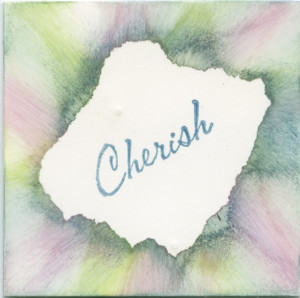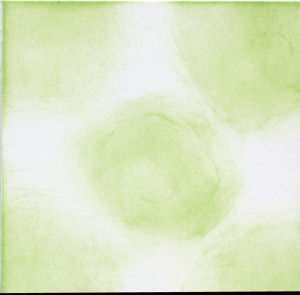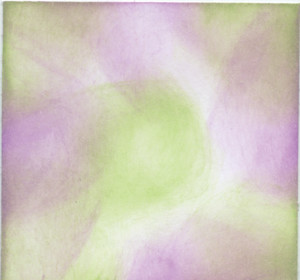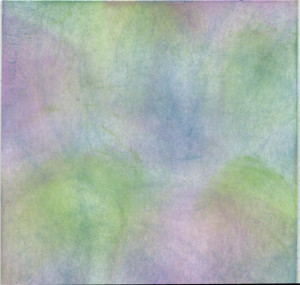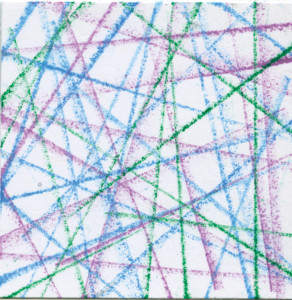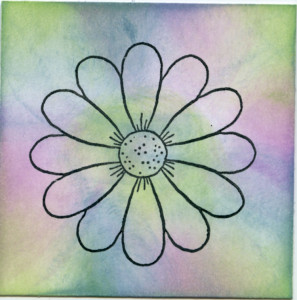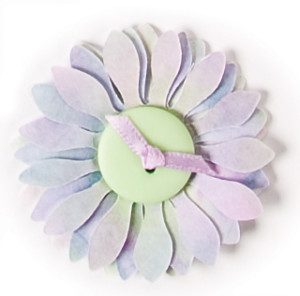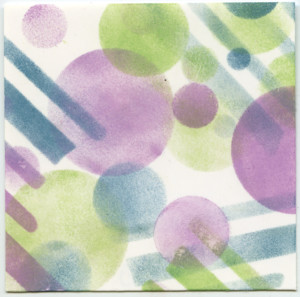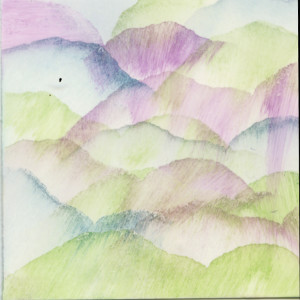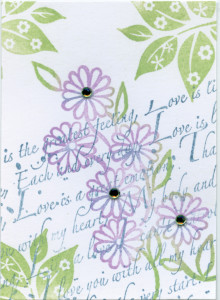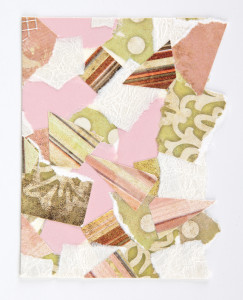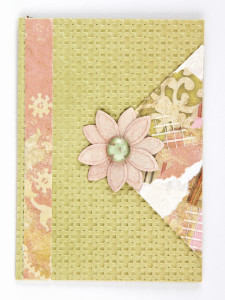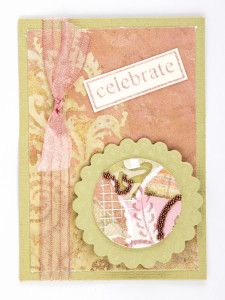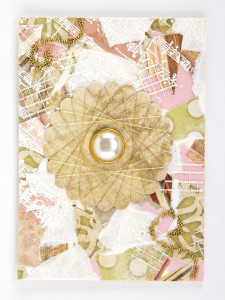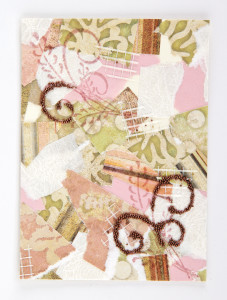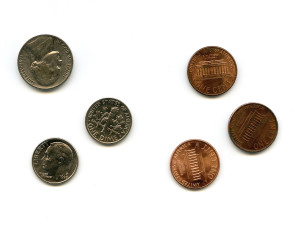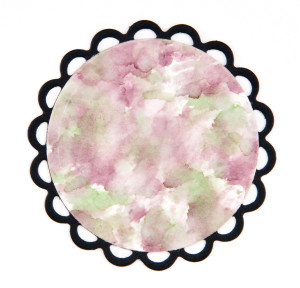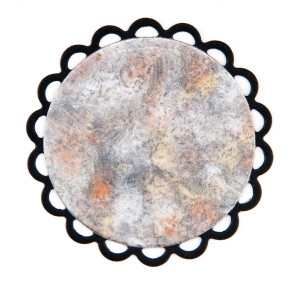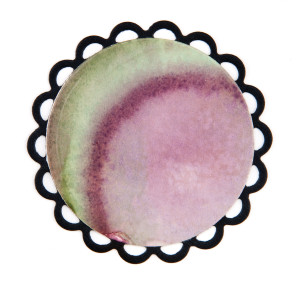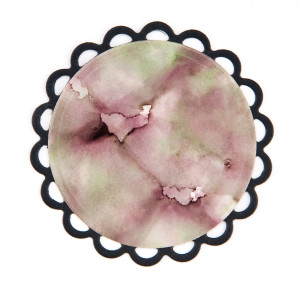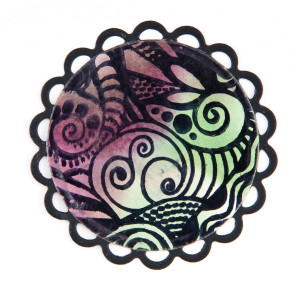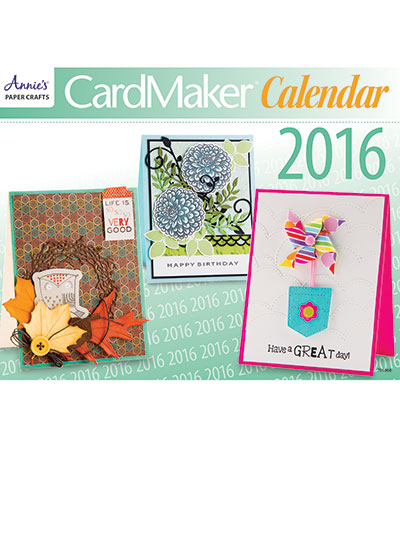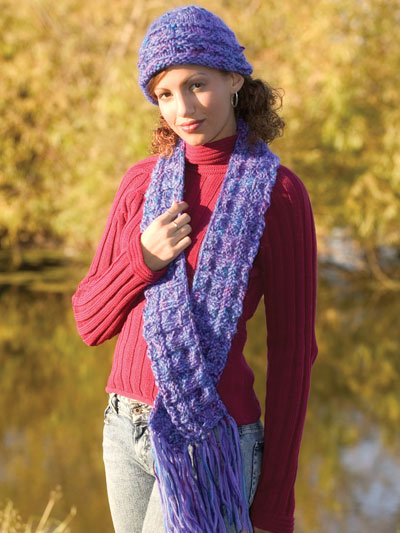By Margot Potter
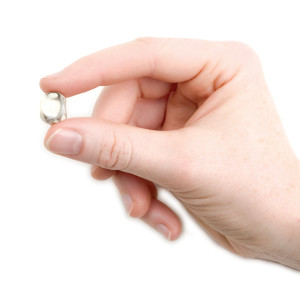
Which Came First, The Chicken or the Bead?
I recently became a chicken farmer, which if you knew me would come as a fairly big surprise. Thus far, my journey has been fraught with peril. Now hold on just a chicken-pickin’ minute, what do chickens have to do with quality beads? Well, here’s the story in an eggshell (pardon the pun).
I went to a local feed store and purchased an array of chicks. I had no idea how old they were, had no control over which chicks went into the box, no idea what hatchery had supplied them and absolutely no way of telling anything about them other than the fact that they were (theoretically) baby girl chickens of various breeds that looked for all the world like healthy and happy birds. I did notice that one of my chicks had been picked on by the others and had a bloody bottom when I arrived home, but this didn’t thoroughly alarm me at the time.
Fast forward to three weeks later and I now have some serious chicken issues. I have done everything that the books and Web sites say is necessary to have happy little chicks. Even so, my chickens came home with a few rather unnerving behavioral problems, which I am beginning to e First, assume developed while they were raised in tiny cages at the feed store for several weeks. My chickens are pecking each other with voracious violence I never knew chickens could express, and no amount of corrective measures can solve the problem. So, you are thinking, that’s really too bad lady, but what’s your point here?
My point is this—it is essential that you know what you are getting into when you buy something. Educate yourself in advance about what to look for, and you won’t be sorry later to find that what you paid hard-earned money for isn’t at all what you assumed it to be. I can’t tell you much at this point about how to buy quality chickens. As a professional jewelry designer, former bead-store owner and long-time bead aficionado, though, I can help you with some guidelines for what to look for when buying quality beads.
In general, good beads just plain look better than their counterparts. Place a quality bead next to one that is subpar and almost anyone should be able to see the difference. In particular, gemstone, crystal and glass beads have a wide variety of quality levels and it is wise to learn what to look for when purchasing these beads for necklaces and other jewelry patterns. Here is an overview of these types of beads and some of the pitfalls you may encounter.
Gemstone Beads
There are many different levels of quality in gemstone beads. The sizes and shapes of gem beads can be inconsistent, the color off and the drill holes extremely small and rough, all depending on where and how they were drilled and polished. I tend to favor gemstone beads from China, as most of these have been cut and drilled by machines, resulting in a very consistent bead. There are excellent gemstone beads from India, but often Indian beads are hand-polished and drilled, and the holes can be difficult to string. That being said, Jaipur is the major stone center and a wonderful variety of gem material comes out of India.
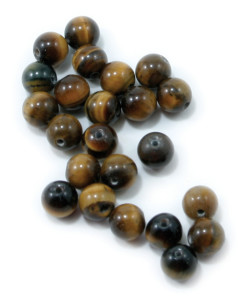
Ask your bead dealer for sources on their beads and also try (if you are able) to test out the beads with a bit of bead-stringing wire or a head pin in the gauge you plan to use to see if the holes are well-drilled and large enough to accommodate your needs. A beader’s toolbox should contain a hand, electric or battery powered bead reamer to smooth out and expand the holes in gemstones to prevent frayed wire and to help accommodate different diameters of wire and head pins.
Look at the beads carefully before you buy. Are they consistent in size and shape? Does the gem material have the proper color? Is the color too light or too dark or is it a good expression of the gemstone? Gems are graded, and the better the grade the more expensive the bead, so this is entirely up to your pocketbook and the aesthetic appeal of the bead. Depending on the design, lower-grade beads or chips can be quite appealing and are worthy of consideration.
Your bead dealer should have a good working knowledge of the gemstones they offer. If they can’t answer your questions about their beads, it may behoove you to find a new dealer. You should also educate yourself in what to look for by purchasing a good gem and mineral buying guide and reading it carefully.
Here are some basic questions you may want to ask as you select your beads:
• Is the stone natural from origin?
• Has it been dyed, heated or irradiated?
• Will the color fade or bleed, or is it permanent?
• Is it reconstituted? • Is it hand- or machine-drilled?
• Is it glass or gemstone material (cherry, blueberry and pineapple “quartz” are actually striated glass)?
• Where was it cut and drilled?
• Hold it up to the light: Is it cloudy, dull, and unappealing?
Educate yourself about what to look for or be prepared for a big learning curve!
Austrian (not Australian!)
Crystal Swarovski® Austrian crystal has many, many imitators. In my opinion, there is nothing that even comes close. Czech glass is fantastic; we will talk about it next, but it isn’t leaded crystal. The light play and sparkle that comes off of a Swarovski bead is unparalleled. There are some pretenders out there, but if you take a moment to really look at their crystal beads you will begin to see size inconsistency, color inconsistency and dullness of the finish. Be prepared to pay a pretty price for quality, but I think it is worth every penny.
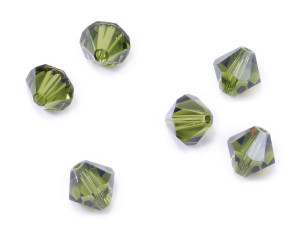
Swarovski creates a rainbow of beautiful colors, and many of them are visually identical to far more expensive gem material such as Siam ruby, Indian sapphire, indicolite tourmaline, emerald … the list goes on. Incorporate crystals with other beads to add a touch of glamour without breaking the bank account. It should be labeled as Swarovski crystal, if it isn’t, it is probably a “knockovski.”
Czech Glass
The people of the Czech Republic have been making exquisite glass beads for many, many years. You just can’t find more variety in color, shape, size, finish or style anywhere else in the world. Czech glass is amazingly affordable and offers beaders a huge range of choices.
Good glass beads are consistent in size and shape, and have vivid color expression. The finish should be smooth and shiny, never dull. The beads should have clean drill holes. There are plenty of glass beads coming out of China these days—many of them are quite unique and lovely—but none of them are Czech glass. Always ask for country of origin and inspect the beads before you buy them to avoid disappointment later.
Art Glass
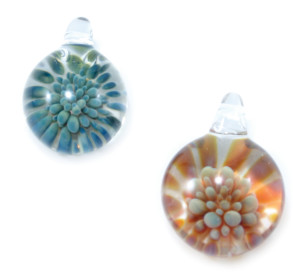
Fantastic handmade glass beads have become very popular and with popularity comes the inevitable knockoff versions from overseas. The difference between the two is in the intricacy of the details. If you want a one-of-a-kind handmade glass bead, you will pay a pretty penny; but these beads are most definitely worth it. To infuse your work with the whimsy of caned glass, millefiori or dichroic glass beads without spending a ton of money, the knockoffs really aren’t bad and are quite affordable. I use both in my work—if I’m designing a repetitive pattern, I go for the knockoffs. If I want an extraordinary pendant or focal bead, I buy directly from the artist that created it. Caned glass from India is very affordable and can be quite lovely as well.
Seed Beads
Those of you who love to weave intricate beaded patterns know that near perfect seed beads come from Japan. Toho or Miyuke (the two major manufacturers) make beads of such exacting size and shape that the resulting finished beadwork is extraordinary. The next best glass seed beads come from the Czech Republic, and they are well-suited for use in simple strung designs and as accent or spacer beads. The least consistent in size and shape, and quality are seed beads from India and China. These inferior beads are good for basic craft applications but not so hot for weaving or even stringing unless you are going for a rustic look.
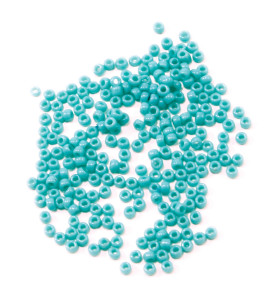
Other Materials
Wood, ceramic, clay, bone—beads come in a huge array of materials. Look for consistent size and shape, colorfastness, detailed craftsmanship and information from the dealer on country of origin. Often these beads are knocked-off in plastic, so make sure you can hold them in your hand and look them over for quality and material. A plastic bead will usually have a seam on it and will be very lightweight.
Vintage Beads
Vintage glass and plastic beads are fun to work into your repertoire. I love to haunt thrift shops, yard sales and flea markets for deals on old beaded jewelry. There are certain materials to look for that will be particularly striking in your work.
Many vintage faceted glass crystal bead necklaces contain antique German and Czech glass beads. I love the faceted crystal with an aurora borealis finish that you can find in chokers from the 1950s. This glass has a romantic flavor and a nice solid weight to it. Make sure you are buying glass—plastic will be far lighter and won’t have the same prismatic light play.
Jet glass beads were popular in the Victorian era and the Art Deco period—sometimes you can find these striking faceted beads and if you do, snap them right up! Bakelite, Lucite, celluloid and other fun plastic beads are becoming a rarity these days and are highly collectible. Bakelite plastic was used to make all sorts of fun and funky jewelry designs in the 1940s. It has a waxy sheen and an opaque color quality and if you touch it with a hot match it smells like pine. If you find bakelite beads in a secondhand shop, you are one lucky camper!
Lucite is a more traditional plastic material. Many Lucite beads from the 1950s and 1960s are still out there for the buying, and they add a wonderful kitschy feel to your work. There are several companies that specialize in these beads if you don’t want to treasure-hunt for them in secondhand shops. Often Lucite has a sheen to it that is similar to a cat’s-eye bead or can be sometimes be striated like glass. Pop-art plastic beads from the 1960s come in all sorts of fun styles and will give you a whimsical alternative to more serious glass and gemstone beads.
Learning what to look for takes trial and error, and a bit of research, so if you are interested, I suggest you borrow some good books from your local library on costume jewelry and more information on spotting good vintage beads.
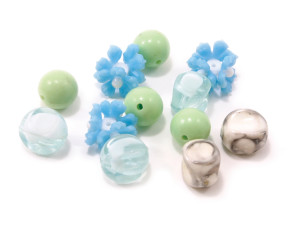
Good Old Beads (or GOBs)
These very, very old beads are very, very collectible. The cool part is that even very ancient beads can be surprisingly affordable. I have come across Mayan beads, ancient Roman glass, Venetian beads and many more. Beware of the fakes, though—in particular, copies of ancient Venetian glass beads that came through Africa in the spice-trade days. When I sold Venetian beads in my shop, I never claimed that any were more than 50 years old, even though they may have been far older.
There are books out there to show you what to look for and this information can help you date a bead. I highly recommend The History of Beads by Lois Sherr Dubin. This book is fascinating and has been painstakingly researched. Beads have wonderful stories to tell, and holding an ancient bead is a powerful experience in touching history.
Buy quality beads from sources that you know and trust. In general, the bigbox craft stores aren’t the best sources for high-end beads, but this is changing rapidly. Beware the dealer that seems to have grand tales surrounding every bead; they may be master storytellers and flimflam artists. If the seller can’t talk to you intelligently and won’t allow you a close-up scrutiny of the beads you are interested in purchasing, they are probably not the best source for your beads. Look for labels that address the origin, the material, the size. A good bead shop is organized, well-lighted and has knowledgeable salesclerks. Experience is the best teacher, and as you become a bead connoisseur you will begin to recognize good beads with ease. Until then, caveat emptor (let the buyer beware!). ●
